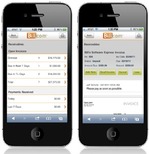Today is a big day for number nerds (note 1), as 11/11/11 makes its once-per-century appearance. So last night, I started looking for banks or credit unions using the date for a price promotion (note 2). With U.S. interest rates hovering around the 1% mark, I figured it would be pretty easy to find financial institutions offering CD specials at 1.11% APY, hopefully the 11-month variety.
But after googling for at least an hour, I came up empty. I found a few 1.11% APYs for longer-term CDs, but no one that was promoting it as a Nov 11 special. I was about to give up, but tried “1.11% discount” and up popped Notre Dame Federal Credit Union going all in on the 11/11/11 theme.
The home page (below) features a huge ad for its 1.11% APR holiday loan of exactly $1,111. And can you guess the term of the loan? Yep, 111 days! Thank you NDFCU marketing dept, you rock.
 Fine print: There is one small catch. To get the loan, members must apply for and be approved for the credit union’s Visa Platinum card (presumably you can still get the holiday loan if you already have the CU’s card). So it’s really a credit card promotion in disguise, but that seems fair. It’s a good price, and allows for a little expansion of the holiday budget, but with the discipline of a loan that must be repaid before April tax time (note 3).
Fine print: There is one small catch. To get the loan, members must apply for and be approved for the credit union’s Visa Platinum card (presumably you can still get the holiday loan if you already have the CU’s card). So it’s really a credit card promotion in disguise, but that seems fair. It’s a good price, and allows for a little expansion of the holiday budget, but with the discipline of a loan that must be repaid before April tax time (note 3).
The offer is good through the end of November. And the loan application can be made online.
————————————–
Notre Dame FCU hits all 1’s on its homepage (11 Nov 2011)
1.11% loan landing page (link)
Notes:
1. I’ve been one for a long time. When I got my first calculator, I pressed “+1” on it 111,111 times just to fill the screen with 1s, the hard way.  2. Most U.S. financial institutions are closed today for Veterans Day, making it less likely to have a special one-day promotion.
2. Most U.S. financial institutions are closed today for Veterans Day, making it less likely to have a special one-day promotion.
3. Members also have the options of rolling the balance onto their NDFCU credit card at the end of the term.
4. Digital clock image from UK’s Daily Telegraph which had a 9-hour head start on the day.
5. Other 11/11/11 news:
– NY Times looks at 11/11/11 promotions
– DealerTrack marked the day with a press release about hitting the 1,111 lender milestone.
– The only promotional email I received using the day was from Starwood hotels (see inset)

















